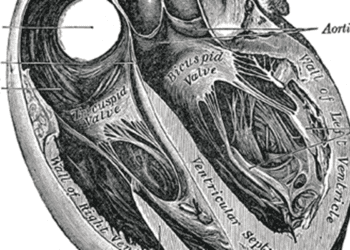Medicare may need additional information to determine expected hospital readmission rates
1. There were a significant number of characteristics not currently employed by Medicare that predicted 30-day hospital readmissions, and which were disproportionately represented in hospitals with the highest readmission rates compared to those with the lowest readmission rates. This indicates that hospitals may be unfairly penalized for readmissions based on the population they serve.
2. The difference in the probability of readmission based on the characteristics currently used by Medicare was cut by about 50% after using the additional variables from the HRS that predicted readmissions.
Evidence Rating Level: 2 (Good)
Study Rundown: Hospital readmissions are major contributors to the cost of health care. As a result, Medicare established the Hospital Readmissions Reduction Program (HRRP), which penalizes hospitals for 30-day readmissions above a certain expected amount. The expected readmissions are based off of certain patient characteristics, including age, discharge diagnosis, and diagnoses present prior to admission. The purpose of this study was to determine if there are other characteristics that are also predictive of greater readmission rates, and whether they are disproportionately represented at hospitals with high readmission rates. The results showed that there were twenty-two additional characteristics that affected readmission rates, including: more chronic conditions, less education, fewer assets, worse self-reported health status, more depressive symptoms, worse cognition, worse physical functioning, and more difficulties with activities of daily living (ADLs) and instrumental activities of daily living (IADLs). These were disproportionately represented at hospitals with the highest readmission rates, implying that these hospitals may be unfairly penalized for their readmissions based on the population they serve.
The difference in the probability of readmission based on the characteristics currently used by Medicare was cut by about 50% after using the additional variables from the Health and Retirement Study (HRS) that also predicted readmissions. The strength of the study was the number of years’ worth of data used and the number of patient characteristics, namely social characteristics, to help identify predictors of the readmissions. One of the weaknesses was not including patients in nursing homes or homeless patients, since those populations do often have higher rates of readmissions.
Click to read the study in JAMA Internal Medicine
Relevant Reading: Community factors and hospital readmission rates
In-Depth [retrospective cohort]: The data for this study was gathered from the HRS, which is longitudinal survey of Americans greater than 50yrs old, from 2000 to 2010. The survey only included community-dwellers, so nursing home residents were excluded. Readmissions within 30-days of the index hospitalization were included in the analysis (planned admissions for certain procedures were excluded). All hospitals were separated into quintiles according to the publicly reported readmission rates, which was based on the Medicare HRRP characteristics of age, discharge diagnosis, and diagnoses present prior to admission. For the HRS study, a total of 29 variables not included by Medicare were studied to determine their effects on the readmission rates and disproportionate representation at certain hospitals.
The results showed that for 22 of the 29 extra variables studied, there were significant differences in the proportions of 30-day readmissions (P<0.04). Of these 22 variables, 17 of them were distributed unevenly amongst hospitals in the highest as compared to the lowest quintiles in readmissions rates (P<0.04). The difference in the probability of readmission based on the variables used by Medicare was 4.41% between the highest as compared to lowest quintiles of hospital’s readmission rates. However, using the other significant variables from the HRS, this difference in the probability of readmission decreased to 2.29%.
Image: PD
©2015 2 Minute Medicine, Inc. All rights reserved. No works may be reproduced without expressed written consent from 2 Minute Medicine, Inc. Inquire about licensing here. No article should be construed as medical advice and is not intended as such by the authors or by 2 Minute Medicine, Inc.







